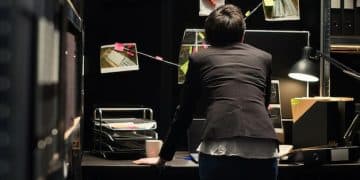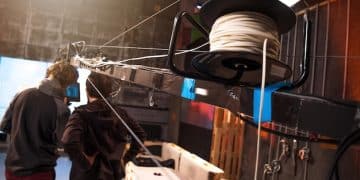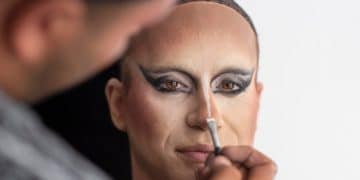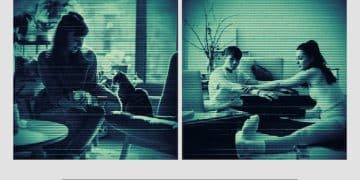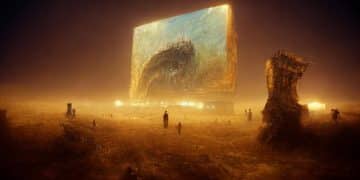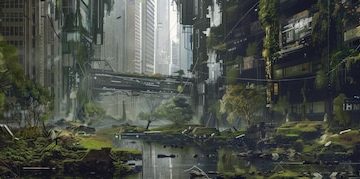Practical Effects vs CGI: Why Real is Still Relevant in Filmmaking
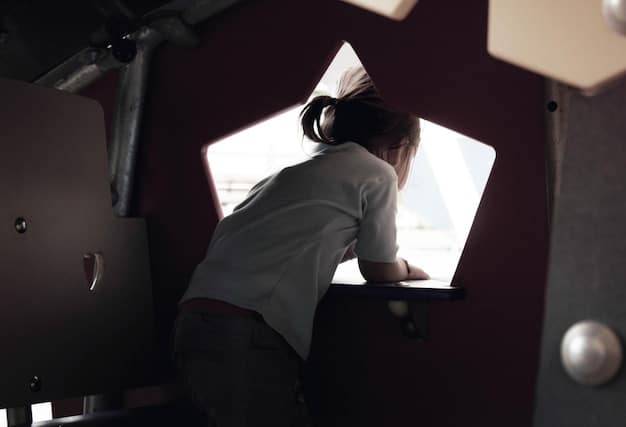
Discover why some filmmakers still champion practical effects over CGI, valuing the tangible realism and unique creative control that physical techniques offer in cinema.
In an era dominated by computer-generated imagery (CGI), the allure of **the lost art of practical effects: why some filmmakers still prefer real over CGI** remains strong, offering a tangible connection to filmmaking’s roots and a unique aesthetic that many find superior to digital creations.
The Resurgence of Practical Effects
Practical effects, involving real-world techniques to create on-screen illusions, have seen a notable resurgence in recent years. This return isn’t merely nostalgia; it’s a conscious choice by filmmakers seeking authenticity and a unique visual style.
Many directors and special effects artists argue that practical effects offer a level of realism and immediacy that CGI often struggles to replicate. The physical presence of these effects on set can also influence actors’ performances, leading to more genuine reactions.
Benefits of Practical Effects
Practical effects bring several advantages to a film production, influencing not only the visual outcome but also the overall filmmaking process.
- Tangible Realism: Practical effects provide a physical presence that CGI often lacks, resulting in a more believable on-screen appearance.
- Enhanced Actor Performance: Actors can physically interact with practical effects, leading to more genuine and realistic performances.
- Creative Problem Solving: Practical effects often require innovative and creative solutions, fostering a collaborative environment on set.
While CGI is undeniably a powerful tool, its overuse can lead to a homogenized visual style. Practical effects offer a way to stand out and provide audiences with something different.
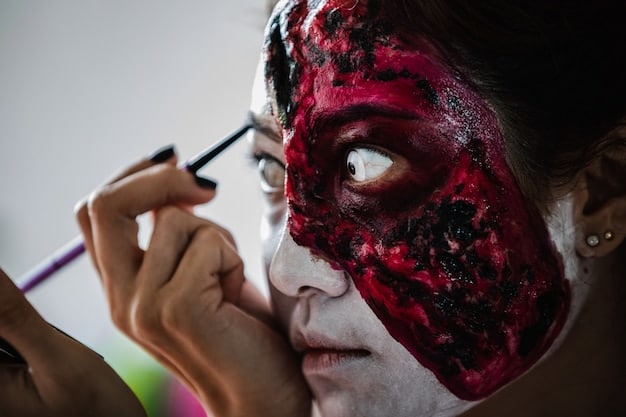
The decision to use practical effects often comes down to artistic vision and a desire to create a specific atmosphere or aesthetic. It’s a reminder that filmmaking is as much about ingenuity as it is about technology.
The Challenges of Practical Effects
Despite their many advantages, practical effects are by no means a simple and straightforward choice. They present a unique set of challenges that filmmakers must carefully consider.
Unlike CGI, which can be easily tweaked and adjusted in post-production, practical effects require careful planning and execution on set. Mistakes can be costly and time-consuming to fix.
Common Obstacles
Successfully implementing practical effects requires overcoming numerous hurdles, from logistical considerations to creative problem-solving.
- Limited Flexibility: Once a practical effect is executed, it can be difficult or impossible to modify it in post-production.
- Safety Concerns: Many practical effects, such as explosions and stunts, pose significant safety risks that must be carefully managed.
- Cost Considerations: Depending on the complexity, practical effects can be either more or less expensive than CGI.
Therefore, filmmakers need to weight the pros and cons carefully before committing to this approach.
Iconic Examples of Practical Effects in Film History
Throughout cinema history, practical effects have been responsible for some of the most memorable and awe-inspiring moments on screen. These examples showcase the power and artistry of physical techniques.
From the groundbreaking creature effects in “The Thing” to the miniature models used in “Star Wars,” practical effects have consistently pushed the boundaries of what’s possible in filmmaking.
Notable Films
Several films stand out as prime examples of the masterful use of practical effects.
- “2001: A Space Odyssey”: Stanley Kubrick’s masterpiece utilized groundbreaking miniatures and forced perspective to create its stunning visual effects.
- “Alien”: Ridley Scott’s horror classic relied heavily on practical creature design and animatronics to bring its terrifying Xenomorph to life.
- “Jurassic Park”: While CGI was used, the film also featured life-sized animatronic dinosaurs that provided a tangible presence on set.
These films demonstrate that practical effects, when executed with skill and imagination, can create truly unforgettable cinematic experiences.

The impact of these effects extends beyond mere visual spectacle; they contribute to the overall atmosphere and believability of the films.
CGI vs. Practical: Finding the Right Balance
The debate between CGI and practical effects is not necessarily about one being superior to the other. The most effective approach often involves finding the right balance between the two.
Many modern filmmakers use CGI to enhance or augment practical effects, creating seamless visuals that are both realistic and visually stunning. This hybrid approach allows for greater flexibility and control.
Hybrid Techniques
Combining CGI and practical effects can result in visuals that are both authentic and impressive.
- CGI Enhancement: Using CGI to refine or extend practical effects, such as adding details to a miniature model.
- Practical Foundation: Creating a physical base with practical effects and then using CGI to add more complex elements.
- Seamless Integration: Blending practical and digital effects so seamlessly that the audience cannot distinguish between them.
The key is to use each technique in a way that complements the other, rather than trying to replace it entirely.
The Future of Practical Effects
Despite advancements in CGI technology, practical effects are likely to remain a valuable tool in filmmaking. Their ability to create tangible realism and foster creativity will continue to appeal to filmmakers.
As audiences become more discerning and seek out authentic experiences, the demand for practical effects may even increase. Filmmakers who master both CGI and practical techniques will be well-positioned to create compelling and visually striking films.
Innovations and Trends
The field of practical effects is constantly evolving, with new techniques and technologies being developed.
- Advanced Animatronics: Creating more lifelike and expressive animatronic creatures.
- Miniature Models: Building incredibly detailed and realistic miniature sets.
- Practical Compositing: Combining multiple practical elements in camera to create complex visuals.
These innovations demonstrate that creative filmmakers will always find new ways to bring their visions to life.
Why Filmmakers Choose Real Over CGI: A Deeper Dive
The decision to favor practical effects over CGI often stems from a desire to create a specific atmosphere, enhance actor performance, and maintain creative control.
For some filmmakers, the tangible nature of practical effects provides a more immersive and collaborative experience on set. It encourages innovation and problem-solving, resulting in visuals that feel more authentic and believable.
Key Considerations
Several factors influence a filmmaker’s choice between practical effects and CGI.
- Creative Vision: The desired aesthetic and atmosphere of the film.
- Budget Constraints: The financial resources available for special effects.
- Technical Expertise: The skills and experience of the special effects team.
Ultimately, the best approach depends on the specific needs and goals of the project.
| Key Point | Brief Description |
|---|---|
| 🎬 Realism | Practical effects provide a tangible realism that CGI often struggles to replicate. |
| 🎭 Actor Performance | Actors can physically interact with practical effects, enhancing their performances. |
| 🛠️ Creative Control | Filmmakers maintain greater creative control over the visual outcome. |
| 💡 Innovation | Practical effects often require innovative and creative solutions on set. |
Frequently Asked Questions
▼
Practical effects are special effects produced physically, without computer-generated imagery (CGI). They involve techniques done on set, like makeup, models, and pyrotechnics, creating tangible realism.
▼
Filmmakers often choose practical effects for their authenticity and the way they enhance actor performances. They provide a real, tangible element that can be more believable for both actors and audiences.
▼
Practical effects can be more complex and less flexible than CGI. They require careful planning, skilled execution, and can be more dangerous, needing stringent safety measures on set.
▼
Yes, often the best results come from combining practical effects with CGI. Practical effects can provide a realistic base, which CGI then enhances, creating seamless and visually stunning scenes.
▼
The cost varies depending on the effect’s complexity. Some practical effects are cheaper than CGI and vice versa. It depends on the scale, detail, and resources required for each type of effect.
Conclusion
The enduring appeal of practical effects lies in their ability to ground films in reality, fostering creativity and providing unique visual experiences. Though technology advances, many filmmakers still seek the tangible connection and authenticity that practical effects offer, proving their continued relevance in the art of filmmaking.
